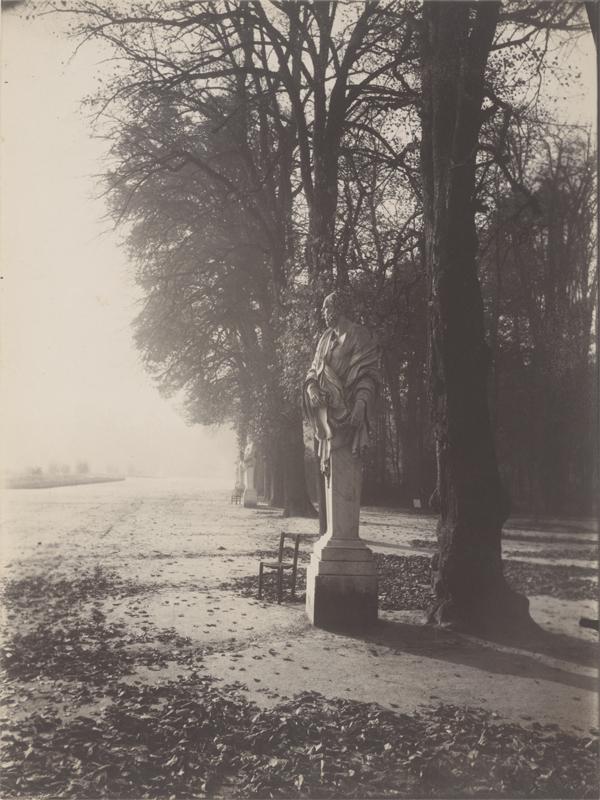by Owen Haney ’14.
Arguments abound the work of La père Atget, or “Father Atget,” as Man Ray fondly (with a touch of condescension) dubbed the Parisian photographer. Contemporary critics struggle to classify Atget’s late-nineteenth-century photographs as surrealist, modernist, or something else entirely. After all, it was only at the end of his life that the surrealists Man Ray and André Breton appropriated the aging Atget into their fledgling artistic revolution. For most of his life, Atget circulated the abandoned Old World gardens of Paris in anonymity and sold his photographs of dying Parisian antiquity to the nostalgic and the archival. For some critics then, Atget’s economic motives negate his artistic value. And for others, Atget’s early arrival on the modernist scene (he was dead by 1927) hinders his incorporation into the modernist pantheon. But for us, and for me certainly, it’s invigorating to imagine the solitary Atget wandering the broken paths of Versailles and seeing something that no one else saw in the noseless statues of forgotten goddesses.
While his work certainly lacks the jaw-dropping, “what is that?” effect of later surrealist photographs, some sensation just as uncanny affects the viewer of Atget’s photograph of the blinding dawn at Versailles. Atget is not merely capturing the dilapidated state of a corroding statue; he has managed to render the erosion of an era. The sun almost consumes the entire photograph. It is only by peering close that we catch sight of the abandoned bench and armless statue. The dawn obliterates these final and isolated remainders of a lost culture. We viscerally experience the pathos of this loss, and read the death of our own culture underneath the death of this one. We begin to understand why various artistic movements will forever claim Atget as their own.
Image details:
Eugène Atget (French, 1857–1927)
Versailles, ca. 1900-1920
arrowroot print
Museum Purchase, Lloyd O. and Marjorie Strong Coulter Fund 1989.26
